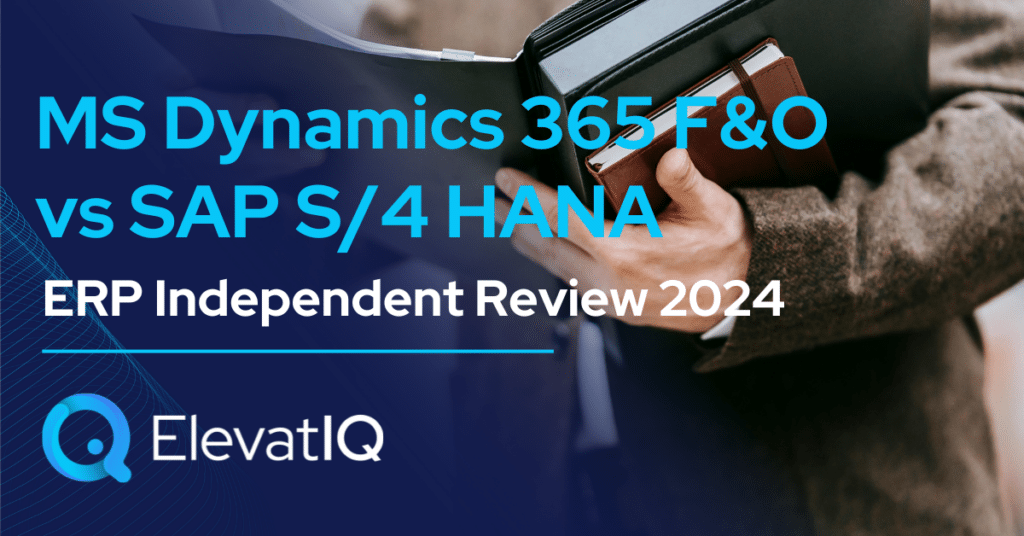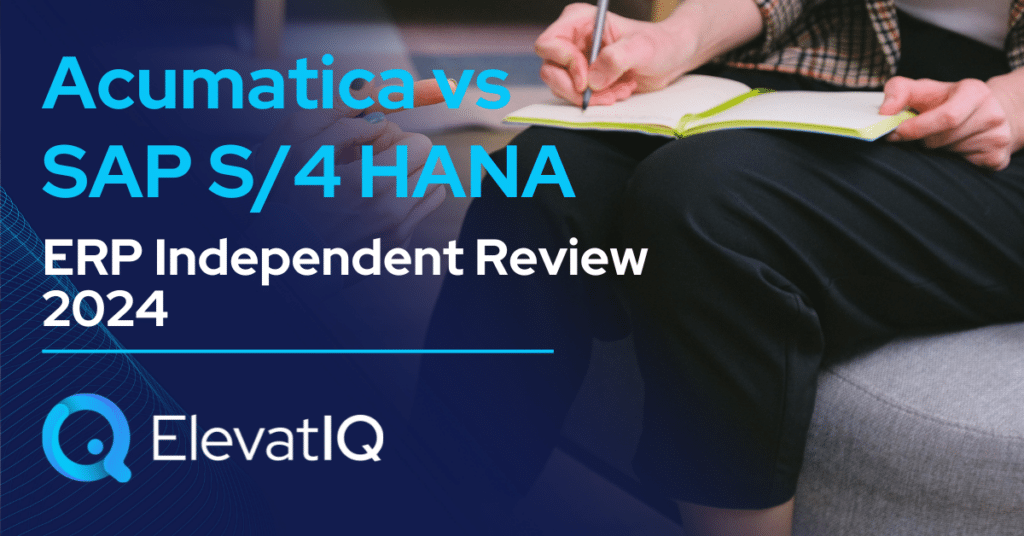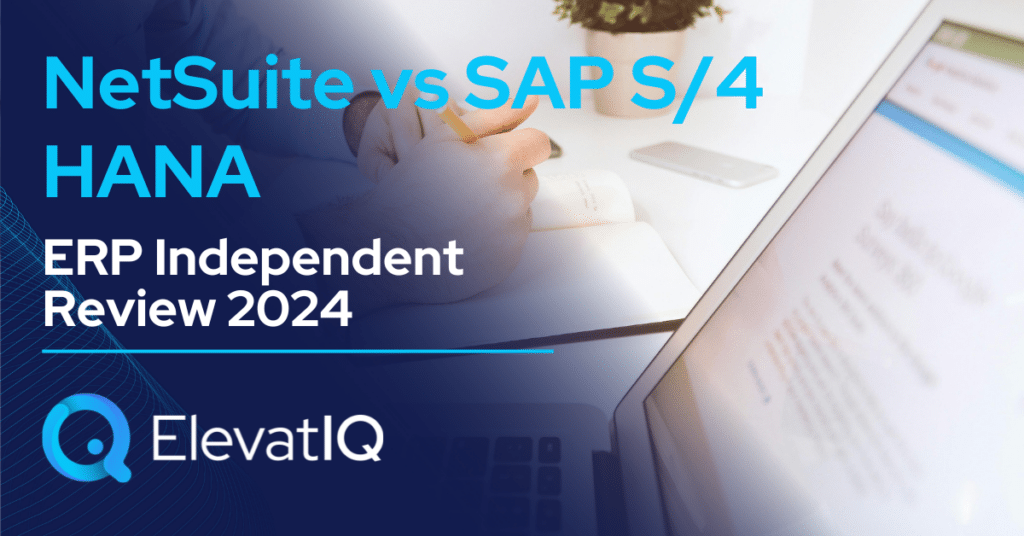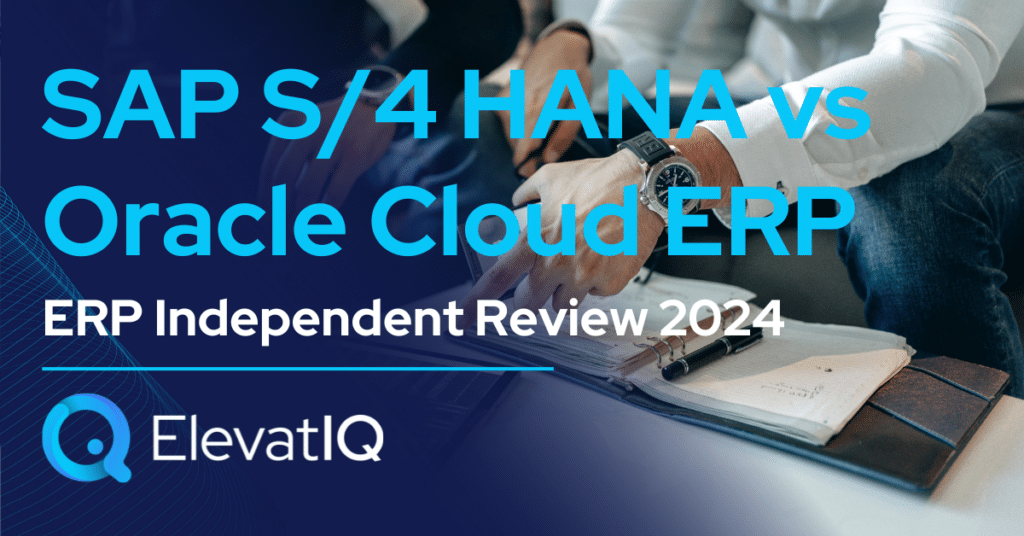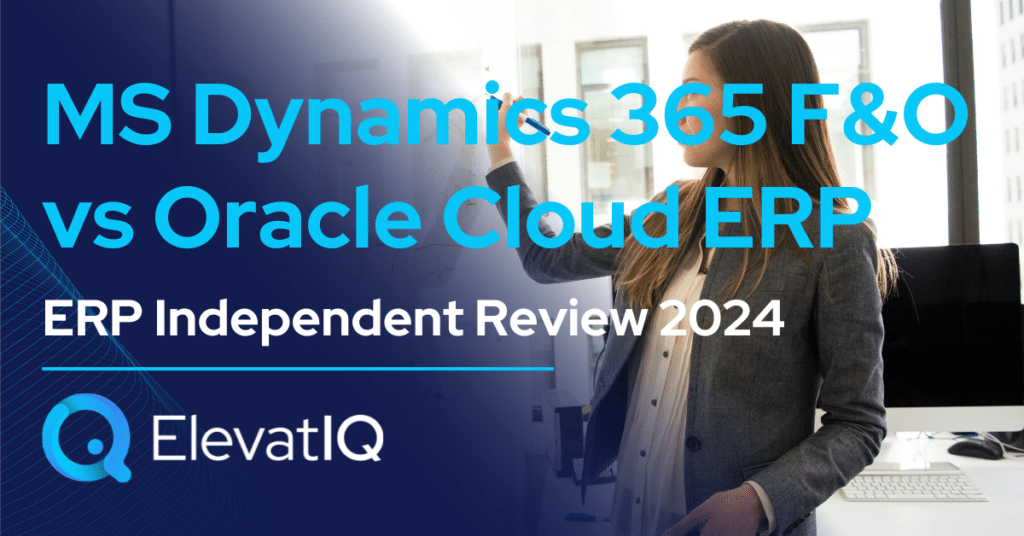Enterprise-grade companies often prefer the architecture accompanying the S/4 HANA Suite, featuring leading products like SAP SuccessFactors for HCM, SAP Hybris for Commerce, SAP EWM for WMS, Ariba for P2P, and Concur for T&E. Meanwhile, Microsoft significantly leads in its cloud-native functionality for Microsoft Dynamics 365 F&O, surpassing competitors like SAP S/4 HANA and Oracle Cloud ERP in this regard.
For product-centric enterprises requiring mature capabilities particularly like MRP and allocation, SAP S/4 HANA stands out as a top choice. Conversely, Microsoft Dynamics 365 F&O suits large, complex global companies with revenues nearing $1B and multiple entities worldwide. SAP S/4 HANA excels for companies operating internationally needing unified database hosting, while Microsoft Dynamics 365 F&O targets those with intricate business models such as discrete manufacturing, distribution, and construction SMBs.
SAP S/4 HANA is particularly suitable for publicly traded and regulated firms, offering integrated compliance processes like SOX. Despite occasional technical hitches in implementations, Microsoft Dynamics 365 F&O remains a solid option for companies of various sizes and business models. So if your ERP selection is between Microsoft Dynamics 365 F&O vs SAP S/4 HANA, this comparison offers vital insights. Therefore, let’s explore further?
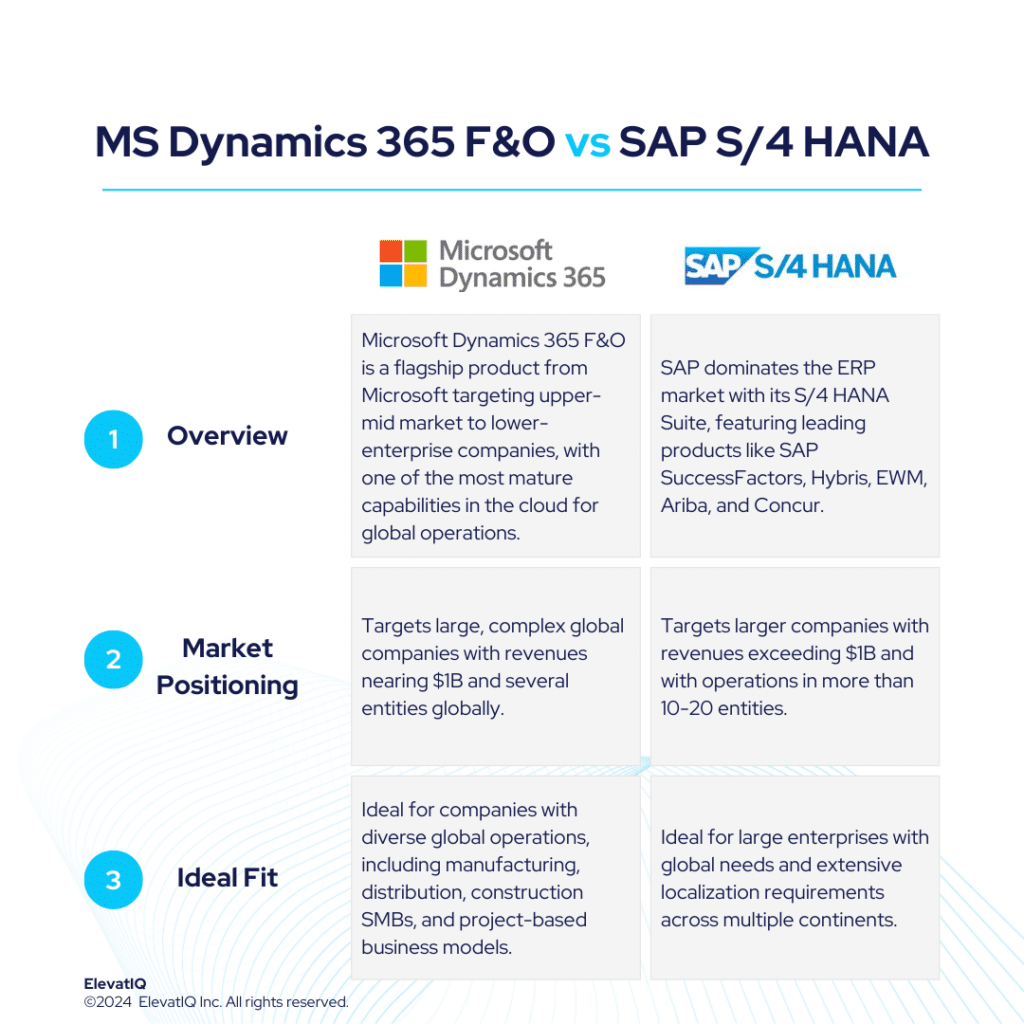

| Microsoft Dynamics 365 F&O | SAP S/4 HANA | |
| Started in | One of the most established enterprise software companies in the world | Pioneers of ERP |
| Ownership by | Microsoft | SAP |
| No. of customers | 50000+ | 28000+ |
What is Microsoft Dynamics 365 Finance & Operations (F&O)?
Microsoft Dynamics 365 F&O is often the third choice for larger global accounts, following SAP S/4 HANA and Oracle Cloud ERP. It also offers a mature ecosystem with modern, cloud-native technologies, proving successful across various industries. It is perhaps the most diverse solution accommodating several global business models in one database, thus making it an ideal solution for lower enterprise companies. While a great fit as a corporate ledger for large enterprises, it’s not as proven as other leading solutions in the enterprise market with workloads as high as millions of journal entries per hour that Fortune 1000 companies might demand.
Microsoft Dynamics 365 F&O particularly excels in localizations where other solutions may falter. A vibrant ecosystem also makes it suitable for private equity and holding companies aiming to streamline their portfolio companies on one solution. SMBs, however, might find its complex data model overwhelming. Large, complex global companies with revenues exceeding $1B will particularly find Microsoft Dynamics 365 F&O appealing.
Although Microsoft Dynamics 365 Finance and Operations lacks the operational depth of specialized solutions, larger companies favor its corporate-level financial control. Furthermore, MS365 F&O offers seamless integration for field service, HCM, and CRM at the database level, empowering large companies to construct a best-of-breed architecture. It is especially strong with WBS-centric processes covering operational and financial schedules equally well. Also, the challenge with MS Dynamics 365 F&O would be the best-of-breed ancillary systems critical for A&D systems, which are not owned and maintained by Microsoft, requiring third-party add-ons.
What Is SAP S/4 HANA?
SAP S/4 HANA remains the top choice particularly for large enterprises with global needs and extensive localization requirements across multiple continents. Also, in this league, its primary rival is Oracle. While alternatives like Unit4, IFS, or Deltek might handle the workload for larger enterprises, they often lack the robust global compliance and transactional capabilities that SAP S/4 HANA offers. Additionally, SAP S/4 HANA excels in providing superior transactional workflow capabilities that are purpose-built to streamline traceability for large and complex organizations.
Moreover, SAP S/4 HANA is an ideal choice for companies seeking a best-of-breed architecture tailored to the needs of specific functions. This architecture allows for operational cores on different ledgers, which is also crucial for larger distribution and 3PL companies managing complex WMS networks. Companies with intricate HCM operations and stringent compliance requirements may particularly find it necessary to integrate a best-of-breed system.
Additionally, for enterprises requiring sophisticated eCommerce platforms with components like CDP or CPQ, SAP S/4 HANA provides the essential capabilities. The flexibility and enterprise-grade best-of-breed architecture make SAP S/4 HANA a standout solution particularly for such diverse operational needs. The cloud version may also require additional third-party add-ons, similar to NetSuite. Nevertheless, organizations opting for the on-prem version can access superior capabilities, potentially outperforming other ERP systems.
Microsoft Dynamics 365 F&O vs SAP S/4 HANA Comparison
Navigating the choice between Microsoft Dynamics 365 F&O vs SAP S/4 HANA is a significant decision for businesses particularly looking for operational efficiency and strategic alignment. Thus, this section delves into the comprehensive comparison of Microsoft Dynamics 365 F&O vs SAP S/4 HANA across various critical dimensions.
| Microsoft Dynamics 365 F&O | SAP S/4 HANA | |
| Global Operational Capabilities | Can consolidate multiple entities across different countries into one database. | Offers comprehensive multi-entity capabilities. |
| Diverse Capabilities | Accommodates various business models but may need add-ons for specific industry functionalities. | Handles diverse business models globally but may require add-ons for deeper operational functions. |
| Best-of-breed Capabilities | Some crucial capabilities like PLM may require additional development. | Integrates enterprise-grade applications supported by SAP, supplemented by third-party add-ons. |
| Last-mile Capabilities | May necessitate add-ons or custom development for specific micro-verticals. | Offers limited pre-built last-mile capabilities, requiring add-ons for micro-industry needs. |
| Operational Functionalities | Provides rich operational functionality suitable for large enterprises. | Offers enterprise-grade operational capabilities, with limitations in industry-specific features. |
| Integration Capabilities | Pre-integrates with best-of-breed CRM and field service solutions, allowing siloed operation. | Doesn’t offer out-of-the-box integration with A&D-specific PLMs and configurators. |
| Manufacturing Capabilities | Supports various manufacturing-centric models such as process, discrete, or batch. | Provides complex manufacturing capabilities for diverse operations but with industry limitations. |
| Pricing Model | Utilizes a cost-per-user, per-month model with user flexibility and true consumption-based pricing. | Named-user based |
| Key Modules | 1. Financial Management 2. Supply Chain Management 3. Manufacturing Management 4. Human Capital Management 5. Business Intelligence and Reporting 6. Security and Compliance 7. Develop and Customize 8. System Administration | 1. Financial Management 2. Sales 3. Procurement 4. Manufacturing Management 5. Supply Chain Management 6. Professional Services Automation 7. CRM |
Microsoft Dynamics 365 F&O vs SAP S/4 HANA Feature Comparison
Both platforms offer a plethora of features and functionalities designed to streamline business operations and enhance efficiency. In this feature comparison, we delve into particularly the distinct capabilities of Microsoft Dynamics 365 F&O vs SAP S/4 HANA across various critical dimensions, providing insights to aid businesses in making informed decisions regarding their ERP selection. Thus, this section discusses features under each of the following modules, particularly financial management, supply chain management, manufacturing management, and business intelligence and reporting.
Financial Management Comparison
In this section, we are discussing a detailed comparison of the financial management capabilities particularly offered by Microsoft Dynamics 365 F&O vs SAP S/4 HANA. By examining their respective strengths and functionalities, particularly in managing financial processes businesses can therefore gain valuable insights to determine the best-suited ERP solution.
| Microsoft Dynamics 365 F&O | SAP S/4 HANA | ||
| Financial Management | General Ledger | Creates and maintains accurate records for financial transactions and generates regular financial reports. | Can support the needs of even the most complex financial organizations with more than ten ledger rollups at the country level and conversions. |
| Accounts Receivable and Accounts Payable | Automates workflows for managing vendor invoices, payments, and customer invoicing, streamlining the entire invoicing process and improving cash flow management. | Supports global collaboration of customers and vendors, including shared service model. | |
| Cash Flow Management | Provides comprehensive cash flow forecasting capabilities, allowing to project future cash positions, identify potential shortfalls, and make informed decisions. | Complex treasury capabilities with the support for global operations, including maintaining treasury KPIs, workflows, and processes for dedicated treasury departments. | |
| Other Features | Chart of Accounts – Enables the creation of a hierarchical structure for categorizing financial information. | Currency Management – Can support complex currency workflows such as hedging and planning for current impact on different financial statements and accounts globally | |
| Budgeting and Forecasting – Creates and manages budgets across different departments and business units. Also, leverages historical data and predictive analytics, to make accurate projections. | Tax Management – Has built-in support for taxes of over 100 countries. |
Supply Chain Management Comparison
In this comparison, we explore and analyze the supply chain management capabilities of Microsoft Dynamics 365 F&O vs SAP S/4 HANA, shedding light, particularly on their respective strengths and weaknesses.
| Microsoft Dynamics 365 F&O | SAP S/4 HANA | ||
| Supply Chain Management | Warehouse Management | Offers advanced features for warehouse and transportation management, ensuring efficient inventory tracking, order fulfillment, and logistics visibility. Supports complex models like 3PL and value-added services for warehouses. | Provides flexibility in architecture, supporting both embedded and standalone patterns, catering to intricate business structures of global logistics operations. |
| Service Management | Manages service agreements, subscriptions, orders, inquiries, and service delivery analysis, particularly suited for global operations with extensive field workforce scheduling needs. | Handles complex service quotes and scheduling workflows for large crews, especially in global operations. | |
| Inventory Management | Offers real-time inventory visibility, demand-supply optimization, and stockout reduction, catering to varied business models of complex organizations. | Features robust inventory management for diverse global organizations. | |
| Other Features | Procurement and Sourcing – Streamlines purchasing activities with end-to-end visibility, cost reduction, and improved supplier relationships. | Purchase Order Management – Manages complex workflows, approval rules, hierarchies, and procurement integration with project management and MRP engines. | |
| Transportation Management – Provides real-time logistics visibility. | Sales Order Management – Handles complex order types tailored to diverse business models. | ||
| Demand Planning and Forecasting – Generates accurate forecasts to optimize production, inventory, and procurement. | Requisition Management – Manages complex requisition processes in global enterprises. |
Manufacturing Management Comparison
In this comparison, we explore and analyze the manufacturing management capabilities of Microsoft Dynamics 365 F&O vs SAP S/4 HANA, shedding light, particularly on their respective strengths and weaknesses.
| Microsoft Dynamics 365 F&O | SAP S/4 HANA | ||
| Manufacturing Management | Production Planning | Provides comprehensive production planning and control capabilities, allowing organizations to optimize their manufacturing processes. The system supports various production scenarios, including make-to-order, make-to-stock, and engineer-to-order, while providing real-time visibility into production schedules, resource allocation, and material requirements. | One of the most complex planning capabilities with enterprise-grade strategies to optimize production cycles for global companies. |
| Other Features | Shop Floor Management – Offers real-time monitoring of shop floor activities, capturing data on machine utilization, labor productivity, and production progress. | BOM and Routing – Enterprise-grade BOM scalability for a variety of business models and products. | |
| Product Lifecycle Management – Enables organizations to manage the entire product lifecycle, from design and engineering to manufacturing and after-sales service. The system integrates product data, engineering change orders, and quality management processes, ensuring seamless collaboration and visibility across different departments. | Advanced Planning and Scheduling – Enterprise-grade advanced APS capabilities for complex globally distributed planning workloads that need to be collaborated across geographies. | ||
| Quality Control and Compliance – Provides robust quality control and compliance features, allowing organizations to define quality standards, perform inspections, track non-conformances, and ensure adherence to regulatory requirements. | Estimating – One of the richest support for UoMs and price books supporting diverse business models but configure-to-order capabilities might not be as native. |
Business Intelligence and Reporting
In this comparison, we explore and analyze the business intelligence and reporting capabilities of Microsoft Dynamics 365 F&O vs SAP S/4 HANA, shedding light, particularly on their respective strengths and weaknesses.
| Microsoft Dynamics 365 F&O | SAP S/4 HANA | ||
| Business Intelligence and Reporting | Real-time Analytics and Dashboard | Enables organizations to gain real-time insights into their operations with interactive dashboards and reports. Also, provides visual representations of key performance indicators, financial metrics, and operational data, empowering stakeholders to make data-driven decisions. | Enterprise-grade real-time analytics and dashboard capabilities. |
| Reporting | Creates custom reports and visualizations tailored to specific needs. This flexibility enables in-depth analysis, data exploration, and the generation of actionable insights to drive continuous improvement and strategic decision-making. | Enterprise-grade capabilities, with data exposed through many different technologies. |
Pros of Microsoft Dynamics 365 F&O vs SAP S/4 HANA
When evaluating ERP solutions, understanding the distinct advantages of Microsoft Dynamics 365 F&O vs SAP S/4 HANA is crucial. In this section, we are particularly exploring the strengths of Microsoft Dynamics 365 F&O vs SAP S/4 HANA across various dimensions. Thus, shedding light on their respective capabilities and functionalities.
| Microsoft Dynamics 365 F&O | SAP S/4 HANA |
| Has a significant advantage in its extensive consulting base and a vibrant marketplace, a unique benefit unmatched by many ERP systems. | It is an ideal solution as the corporate financial ledger for global companies with multiple layers of financial hierarchies operating in multiple countries. |
| Supports global operations and business models and pre-baked integration for the best-of-breed CRM and field service solutions. | The item master, product model, and warehouse architecture can accommodate the needs of most manufacturing business models. |
| Embedded WMS and TMS processes help companies that might require end-to-end traceability even after the good leaves the dock. | Because of the power of HANA, SAP S/4 HANA can process very complex MRP runs with product models containing millions of serial numbers and SKUs, making it much faster than most ERP systems. |
| Legacy product rearchitected for the cloud. So, while better than other legacy products that might be behind in the cloud. May not have a superior user experience. | Ideal fit for complex operations with its transactional maps capabilities built with the products, making debugging complex financial enterprises easier. |
Cons of Microsoft Dynamics 365 F&O vs SAP S/4 HANA
Just like recognizing strengths is important, it’s also crucial to weigh the specific drawbacks of Microsoft Dynamics 365 F&O vs SAP S/4 HANA. Therefore, in this section, we will delve into the limitations and challenges associated with Microsoft Dynamics 365 F&O vs SAP S/4 HANA across various operational and financial dimensions.
| Microsoft Dynamics 365 F&O | SAP S/4 HANA |
| Smaller companies may find the configuration and approval flows designed for large enterprises overwhelming. | Controls integrated into the product might seem unnecessary for smaller companies. |
| Performance may not meet expectations for large, complex organizations processing millions of journal entries per hour. | Overbloated financial control processes, such as compliance, allocation, and approval flows. |
| Overbloated financial control processes, such as compliance, allocation, and approval flows. | The data model is overwhelming for smaller organizations outgrowing QuickBooks or smaller ERP systems. |
| Navigating the Microsoft Dynamics 365 ecosystem might require assistance due to the presence of unqualified ISVs and VARs. | Despite advanced financial traceability and technical capabilities, the functional capabilities are not as rich as with its on-prem version. |
| Integration with A&D-specific PLMs, configurators, and CPQ systems is not out-of-the-box, leading to increased implementation time and costs. | While SAP S/4 HANA offers best-of-breed solutions, they may not be as pre-integrated as other options. |
| Implementing last-mile capabilities for specific A&D verticals may necessitate third-party solutions or custom integration, increasing expenses. | In industries where SAP S/4 HANA is less frequently used, other solutions might offer deeper last-mile capabilities. |
Conclusion
In summary, the comparison between Microsoft Dynamics 365 F&O and SAP S/4 HANA highlights their respective strengths and weaknesses. While SAP S/4 HANA excels with its robust architecture and compliance features, Microsoft Dynamics 365 F&O stands out for its cloud-native functionality and adaptability to diverse business models. Choosing between Microsoft Dynamics 365 F&O vs SAP S/4 HANA depends on the specific needs and priorities of each organization, considering factors such as scalability, industry requirements, and integration capabilities.
Thus, by thoroughly assessing these aspects and utilizing the knowledge gained from this comparison, companies can make educated decisions that match their future objectives, enhancing efficiency and competitiveness in today’s ever-changing market. Hence, seeking assistance from an independent ERP consultant can significantly aid the decision-making process, offering specialized advice and direction tailored to the specific needs of the business and how they correspond with the key features of both products.



